Stuck for your next read? Here’s a sneak peak at what the staff of TPL are reading right now! Click on the titles to put a hold on in the catalog.
Helen: The Dead Play On by Heather Graham
 Musicians are being murdered in New Orleans. But Arnie Watson apparently died by his own hand. When Tyler Anderson plays the saxophone he inherited from Arnie, a soldier and musician who died soon after his return, he believes he sees visions of his friend’s life—and death. He becomes convinced Arnie was murdered and that the instrument had something to do with whatever happened, and with whatever’s happening all over the city…
Musicians are being murdered in New Orleans. But Arnie Watson apparently died by his own hand. When Tyler Anderson plays the saxophone he inherited from Arnie, a soldier and musician who died soon after his return, he believes he sees visions of his friend’s life—and death. He becomes convinced Arnie was murdered and that the instrument had something to do with whatever happened, and with whatever’s happening all over the city…
Cyndi: I Was Here by Gayle Forman
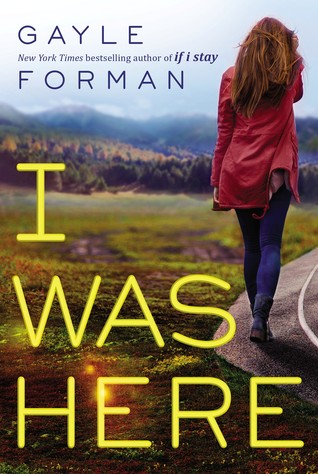 When her best friend Meg drinks a bottle of industrial-strength cleaner alone in a motel room, Cody is understandably shocked and devastated. She and Meg shared everything—so how was there no warning? But when Cody travels to Meg’s college town to pack up the belongings left behind, she discovers that there’s a lot that Meg never told her. About her old roommates, the sort of people Cody never would have met in her dead-end small town in Washington. About Ben McAllister, the boy with a guitar and a sneer, who broke Meg’s heart. And about an encrypted computer file that Cody can’t open—until she does, and suddenly everything Cody thought she knew about her best friend’s death gets thrown into question.
When her best friend Meg drinks a bottle of industrial-strength cleaner alone in a motel room, Cody is understandably shocked and devastated. She and Meg shared everything—so how was there no warning? But when Cody travels to Meg’s college town to pack up the belongings left behind, she discovers that there’s a lot that Meg never told her. About her old roommates, the sort of people Cody never would have met in her dead-end small town in Washington. About Ben McAllister, the boy with a guitar and a sneer, who broke Meg’s heart. And about an encrypted computer file that Cody can’t open—until she does, and suddenly everything Cody thought she knew about her best friend’s death gets thrown into question.
Lynne: Silent Alarm by Jennifer Banash
 Alys’s whole world was comprised of the history project that was due, her upcoming violin audition, being held tightly in the arms of her boyfriend, Ben, and laughing with her best friend, Delilah. At least it was—until she found herself on the wrong end of a shotgun in the school library. Her suburban high school had become one of those places you hear about on the news—a place where some disaffected youth decided to end it all and take as many of his teachers and classmates with him as he could. Except, in this story, that youth was Alys’s own brother, Luke. He killed fifteen others and himself, but spared her—though she’ll never know why.
Alys’s whole world was comprised of the history project that was due, her upcoming violin audition, being held tightly in the arms of her boyfriend, Ben, and laughing with her best friend, Delilah. At least it was—until she found herself on the wrong end of a shotgun in the school library. Her suburban high school had become one of those places you hear about on the news—a place where some disaffected youth decided to end it all and take as many of his teachers and classmates with him as he could. Except, in this story, that youth was Alys’s own brother, Luke. He killed fifteen others and himself, but spared her—though she’ll never know why.
Bernardo: A Dirty Job by Christopher Moore (on audio)
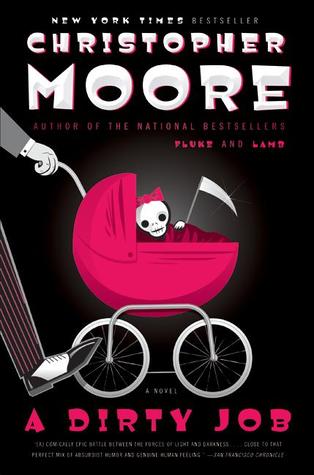 Charlie Asher is a pretty normal guy. A little hapless, somewhat neurotic, sort of a hypochondriac. But Charlie’s been lucky. He owns a building in the heart of San Francisco, and runs a secondhand store with the help of a couple of loyal, if marginally insane, employees. He’s married to a bright and pretty woman who actually loves him for his normalcy. And she, Rachel, is about to have their first child. That is, until the day his daughter, Sophie, is born. Just as Charlie–exhausted from the birth–turns to go home, he sees a strange man in mint-green golf wear at Rachel’s hospital bedside, a man who claims that no one should be able to see him. But see him Charlie does, and from here on out, things get really weird…
Charlie Asher is a pretty normal guy. A little hapless, somewhat neurotic, sort of a hypochondriac. But Charlie’s been lucky. He owns a building in the heart of San Francisco, and runs a secondhand store with the help of a couple of loyal, if marginally insane, employees. He’s married to a bright and pretty woman who actually loves him for his normalcy. And she, Rachel, is about to have their first child. That is, until the day his daughter, Sophie, is born. Just as Charlie–exhausted from the birth–turns to go home, he sees a strange man in mint-green golf wear at Rachel’s hospital bedside, a man who claims that no one should be able to see him. But see him Charlie does, and from here on out, things get really weird…
Horde by Ann Aguirre
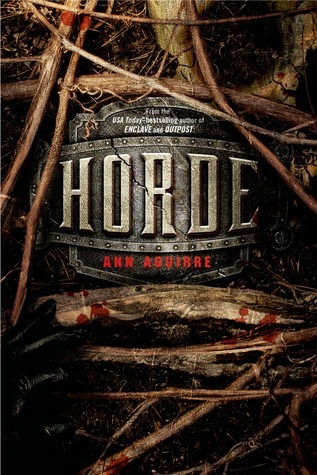 The horde is coming.
The horde is coming.
Salvation is surrounded, monsters at the gates, and this time, they’re not going away. When Deuce, Fade, Stalker and Tegan set out, the odds are against them. But the odds have been stacked against Deuce from the moment she was born. She might not be a Huntress anymore, but she doesn’t run. With her knives in hand and her companions at her side, she will not falter, whether fighting for her life or Fade’s love.
Jennifer: Of Nightingales That Weep by Katherine Paterson
 The daughter of a samurai never weeps. But Takiko, whose warrior father was killed in battle, finds this a hard rule, especially when her mother remarries a strange and ugly country potter. To get away from her miserable home, Takiko eagerly accepts a position at the imperial Japanese court. There, her beauty and nightingale voice captivate the handsome young warrior, Hideo–who also turns out to be an enemy spy. As war breaks out, Takiko flees the court and is forced to choose between loyalty to her people and her love for Hideo. She painfully learns that whatever choice she makes, she cannot run away from her samurai honor.
The daughter of a samurai never weeps. But Takiko, whose warrior father was killed in battle, finds this a hard rule, especially when her mother remarries a strange and ugly country potter. To get away from her miserable home, Takiko eagerly accepts a position at the imperial Japanese court. There, her beauty and nightingale voice captivate the handsome young warrior, Hideo–who also turns out to be an enemy spy. As war breaks out, Takiko flees the court and is forced to choose between loyalty to her people and her love for Hideo. She painfully learns that whatever choice she makes, she cannot run away from her samurai honor.
Julie: The Shadows by J.R. Ward
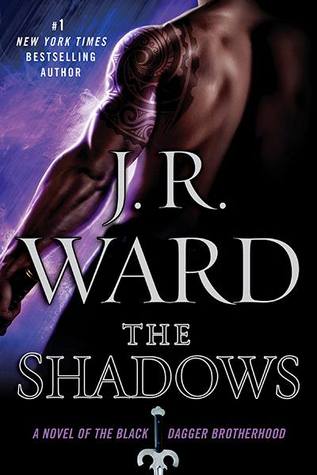 Trez “Latimer” doesn’t really exist. And not just because the identity was created so that a Shadow could function in the underbelly of the human world. Sold by his parents to the Queen of the S’Hsibe as a child, Trez escaped the Territory and has been a pimp and an enforcer in Caldwell, NY for years–all the while on the run from a destiny of servitude. He’s never had anyone he could totally rely on… except for his brother, iAm. Trapped between his heart and a fate he never volunteered for, Trez must decide whether to endanger himself and others–or forever leave behind the female he’s in love with. But then an unimaginable tragedy strikes and changes everything. Staring out over an emotional abyss, Trez must find a reason to go on or risk losing himself and his soul forever. And iAm, in the name of brotherly love, is faced with making the ultimate sacrifice…
Trez “Latimer” doesn’t really exist. And not just because the identity was created so that a Shadow could function in the underbelly of the human world. Sold by his parents to the Queen of the S’Hsibe as a child, Trez escaped the Territory and has been a pimp and an enforcer in Caldwell, NY for years–all the while on the run from a destiny of servitude. He’s never had anyone he could totally rely on… except for his brother, iAm. Trapped between his heart and a fate he never volunteered for, Trez must decide whether to endanger himself and others–or forever leave behind the female he’s in love with. But then an unimaginable tragedy strikes and changes everything. Staring out over an emotional abyss, Trez must find a reason to go on or risk losing himself and his soul forever. And iAm, in the name of brotherly love, is faced with making the ultimate sacrifice…
Linda: First Degree by David Rosenfelt
 I just finished First Degree by David Rosenfelt. It’s the second in a mystery series starring a wise cracking lawyer named Andy Carpenter. The first one is Open and Shut, also a good read, humorous and fast moving.
I just finished First Degree by David Rosenfelt. It’s the second in a mystery series starring a wise cracking lawyer named Andy Carpenter. The first one is Open and Shut, also a good read, humorous and fast moving.
Mariah: The Thickety: The Whispering Trees by J.A. White.
 The second book in J. A. White’s critically acclaimed middle grade fantasy series continues the fantastical story of Kara and her journey into the Thickety. After Kara Westfall’s village turns on her for practicing witchcraft, she and her brother, Taff, flee to the one place they know they won’t be followed: the Thickety. Only this time the Forest Demon, Sordyr, is intent on keeping them there. Sordyr is not the Thickety’s only danger: unknown magic lurks behind every twist and shadow of the path. And then Kara and Taff discover Mary Kettle, an infamous witch with an unspeakable past—she is everything their village fears about magic.
The second book in J. A. White’s critically acclaimed middle grade fantasy series continues the fantastical story of Kara and her journey into the Thickety. After Kara Westfall’s village turns on her for practicing witchcraft, she and her brother, Taff, flee to the one place they know they won’t be followed: the Thickety. Only this time the Forest Demon, Sordyr, is intent on keeping them there. Sordyr is not the Thickety’s only danger: unknown magic lurks behind every twist and shadow of the path. And then Kara and Taff discover Mary Kettle, an infamous witch with an unspeakable past—she is everything their village fears about magic.
Susan: All the Light We Cannot See By Anthony Doerr
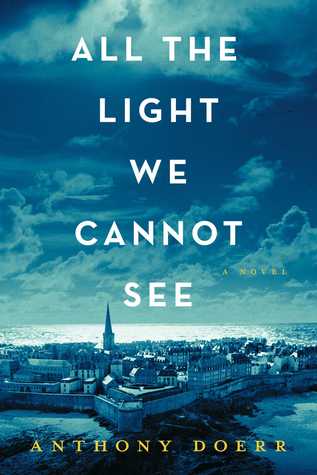 Marie-Laure lives with her father in Paris near the Museum of Natural History, where he works as the master of its thousands of locks. When she is six, Marie-Laure goes blind and her father builds a perfect miniature of their neighborhood so she can memorize it by touch and navigate her way home. When Marie-Laure is twelve, the Nazis occupy Paris, and father and daughter flee to the walled citadel of Saint-Malo, where Marie-Laure’s reclusive great-uncle lives in a tall house by the sea. With them they carry what might be the museum’s most valuable and dangerous jewel. In a mining town in Germany, the orphan Werner grows up with his younger sister, enchanted by a crude radio they find. Werner becomes an expert at building and fixing these crucial new instruments, a talent that wins him a place at a brutal academy for Hitler Youth, then a special assignment to track the resistance. More and more aware of the human cost of his intelligence, Werner travels through the heart of the war and, finally, into Saint-Malo, where his story and Marie-Laure’s converge.
Marie-Laure lives with her father in Paris near the Museum of Natural History, where he works as the master of its thousands of locks. When she is six, Marie-Laure goes blind and her father builds a perfect miniature of their neighborhood so she can memorize it by touch and navigate her way home. When Marie-Laure is twelve, the Nazis occupy Paris, and father and daughter flee to the walled citadel of Saint-Malo, where Marie-Laure’s reclusive great-uncle lives in a tall house by the sea. With them they carry what might be the museum’s most valuable and dangerous jewel. In a mining town in Germany, the orphan Werner grows up with his younger sister, enchanted by a crude radio they find. Werner becomes an expert at building and fixing these crucial new instruments, a talent that wins him a place at a brutal academy for Hitler Youth, then a special assignment to track the resistance. More and more aware of the human cost of his intelligence, Werner travels through the heart of the war and, finally, into Saint-Malo, where his story and Marie-Laure’s converge.
Charlotte’s Web by E.B. White
 An affectionate pig named Wilbur befriends a spider named Charlotte, who lives in the rafters above his pen. In this story of friendship, hardship, and the passing on into time, White reminds readers to open their eyes to the wonder and miracle found in the simplest of things.
An affectionate pig named Wilbur befriends a spider named Charlotte, who lives in the rafters above his pen. In this story of friendship, hardship, and the passing on into time, White reminds readers to open their eyes to the wonder and miracle found in the simplest of things.
Wind in the Willows by Kenneth Grahame
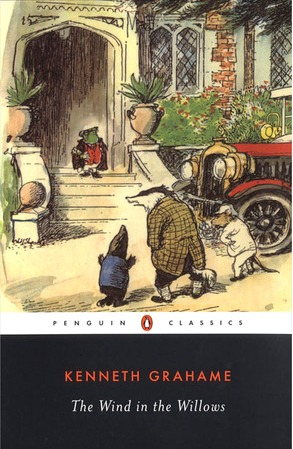 Meet Mole, Ratty, Badger, and Toad. Over one hundred years since their first appearance in 1908, they’ve become emblematic archetypes of eccentricity, folly, and friendship. And their misadventures–in gypsy caravans, stolen sports cars, and their Wild Wood–continue to capture readers’ imaginations and warm their hearts long after they grow up. Begun as a series of letters from Kenneth Grahame to his son, The Wind in the Willows is a timeless tale of animal cunning and human camaraderie.
Meet Mole, Ratty, Badger, and Toad. Over one hundred years since their first appearance in 1908, they’ve become emblematic archetypes of eccentricity, folly, and friendship. And their misadventures–in gypsy caravans, stolen sports cars, and their Wild Wood–continue to capture readers’ imaginations and warm their hearts long after they grow up. Begun as a series of letters from Kenneth Grahame to his son, The Wind in the Willows is a timeless tale of animal cunning and human camaraderie.
Rereading: The All Souls Trilogy by Deborah Harkness
 The All Souls Trilogy follows the story of Diana Bishop, a historian and reluctant witch, as she solves the mystery of Ashmole 782, falls in love with a mysterious vampire named Matthew Clairmont, and learns how powerful it can be to accept who you are.
The All Souls Trilogy follows the story of Diana Bishop, a historian and reluctant witch, as she solves the mystery of Ashmole 782, falls in love with a mysterious vampire named Matthew Clairmont, and learns how powerful it can be to accept who you are.
Dale: The Sculptor by Scott McCloud
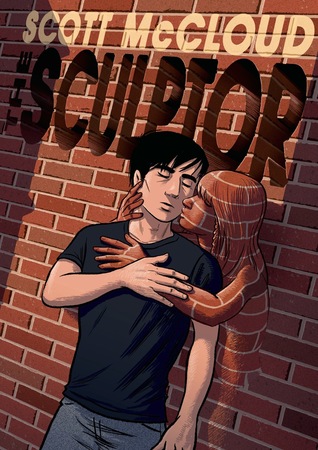 David Smith is giving his life for his art—literally. Thanks to a deal with Death, the young sculptor gets his childhood wish: to sculpt anything he can imagine with his bare hands. But now that he only has 200 days to live, deciding what to create is harder than he thought, and discovering the love of his life at the 11th hour isn’t making it any easier!
David Smith is giving his life for his art—literally. Thanks to a deal with Death, the young sculptor gets his childhood wish: to sculpt anything he can imagine with his bare hands. But now that he only has 200 days to live, deciding what to create is harder than he thought, and discovering the love of his life at the 11th hour isn’t making it any easier!
Emma: The Thousand Autumns of Jacob de Zoet by David Mitchell
 In 1799, Jacob de Zoet disembarks on the tiny island of Dejima, the Dutch East India Company’s remotest trading post in a Japan otherwise closed to the outside world. A junior clerk, his task is to uncover evidence of the previous Chief Resident’s corruption. Cold-shouldered by his compatriots, Jacob earns the trust of a local interpreter and, more dangerously, becomes intrigued by a rare woman—a midwife permitted to study on Dejima under the company physician. He cannot foresee how disastrously each will be betrayed by someone they trust, nor how intertwined and far-reaching the consequences.
In 1799, Jacob de Zoet disembarks on the tiny island of Dejima, the Dutch East India Company’s remotest trading post in a Japan otherwise closed to the outside world. A junior clerk, his task is to uncover evidence of the previous Chief Resident’s corruption. Cold-shouldered by his compatriots, Jacob earns the trust of a local interpreter and, more dangerously, becomes intrigued by a rare woman—a midwife permitted to study on Dejima under the company physician. He cannot foresee how disastrously each will be betrayed by someone they trust, nor how intertwined and far-reaching the consequences.
The Year’s Best Dark Fantasy and Horror 2014 Edition edited by Paula Guran
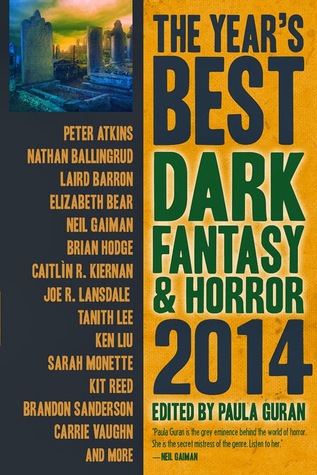 There are no copies available in the system at present. I will donate my copy when I am done!
There are no copies available in the system at present. I will donate my copy when I am done!
No matter your expectations, the dark is full of the unknown: grim futures, distorted pasts, invasions of the uncanny, paranormal fancies, weird dreams, unnerving nightmares, baffling enigmas, revelatory excursions, desperate adventures, spectral journeys, mundane terrors, and supernatural visions. You may stumble into obsession – or find redemption. Often disturbing, occasionally delightful, let The Year’s Best Dark Fantasy and Horror be your annual guide through the mysteries and wonders of dark fiction.

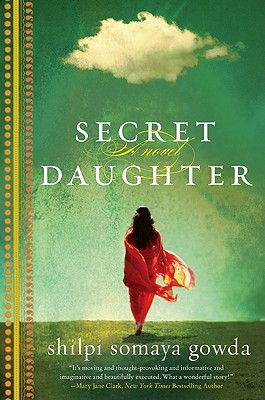 On the eve of the monsoons, in a remote Indian village, Kavita gives birth to a baby girl. But in a culture that favors sons, the only way for Kavita to save her newborn daughter’s life is to give her away. It is a decision that will haunt her and her husband for the rest of their lives, even after the arrival of their cherished son. Halfway around the globe, Somer, an American doctor, decides to adopt a child after making the wrenching discovery that she will never have one of her own. When she and her husband, Krishnan, see a photo of the baby with the gold-flecked eyes from a Mumbai orphanage, they are overwhelmed with emotion. Somer knows life will change with the adoption but is convinced that the love they already feel will overcome all obstacles. Interweaving the stories of Kavita, Somer, and the child that binds both of their destinies, Secret Daughter poignantly explores the emotional terrain of motherhood, loss, identity, and love, as witnessed through the lives of two families—one Indian, one American—and the child that indelibly connects them.
On the eve of the monsoons, in a remote Indian village, Kavita gives birth to a baby girl. But in a culture that favors sons, the only way for Kavita to save her newborn daughter’s life is to give her away. It is a decision that will haunt her and her husband for the rest of their lives, even after the arrival of their cherished son. Halfway around the globe, Somer, an American doctor, decides to adopt a child after making the wrenching discovery that she will never have one of her own. When she and her husband, Krishnan, see a photo of the baby with the gold-flecked eyes from a Mumbai orphanage, they are overwhelmed with emotion. Somer knows life will change with the adoption but is convinced that the love they already feel will overcome all obstacles. Interweaving the stories of Kavita, Somer, and the child that binds both of their destinies, Secret Daughter poignantly explores the emotional terrain of motherhood, loss, identity, and love, as witnessed through the lives of two families—one Indian, one American—and the child that indelibly connects them. I Am Not Perfect is a simple statement of profound truth, the first step toward understanding the human condition, for to deny your essential imperfection is to deny yourself and your own humanity. The spirituality of imperfection, steeped in the rich traditions of the Hebrew prophets and Greek thinkers, Buddhist sages and Christian disciples, is a message as timeless as it is timely. This insightful work draws on the wisdom stories of the ages to provide an extraordinary wellspring of hope and inspiration to anyone thirsting for spiritual growth and guidance in these troubled times.
I Am Not Perfect is a simple statement of profound truth, the first step toward understanding the human condition, for to deny your essential imperfection is to deny yourself and your own humanity. The spirituality of imperfection, steeped in the rich traditions of the Hebrew prophets and Greek thinkers, Buddhist sages and Christian disciples, is a message as timeless as it is timely. This insightful work draws on the wisdom stories of the ages to provide an extraordinary wellspring of hope and inspiration to anyone thirsting for spiritual growth and guidance in these troubled times.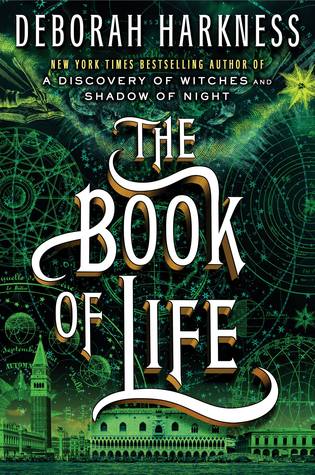 After traveling through time in Shadow of Night, the second book in Deborah Harkness’s enchanting series, historian and witch Diana Bishop and vampire scientist Matthew Clairmont return to the present to face new crises and old enemies. At Matthew’s ancestral home at Sept-Tours, they reunite with the cast of characters from A Discovery of Witches–with one significant exception. But the real threat to their future has yet to be revealed, and when it is, the search for Ashmole 782 and its missing pages takes on even more urgency. In the trilogy’s final volume, Harkness deepens her themes of power and passion, family and caring, past deeds and their present consequences. In ancestral homes and university laboratories, using ancient knowledge and modern science, from the hills of the Auvergne to the palaces of Venice and beyond, the couple at last learn what the witches discovered so many centuries ago.
After traveling through time in Shadow of Night, the second book in Deborah Harkness’s enchanting series, historian and witch Diana Bishop and vampire scientist Matthew Clairmont return to the present to face new crises and old enemies. At Matthew’s ancestral home at Sept-Tours, they reunite with the cast of characters from A Discovery of Witches–with one significant exception. But the real threat to their future has yet to be revealed, and when it is, the search for Ashmole 782 and its missing pages takes on even more urgency. In the trilogy’s final volume, Harkness deepens her themes of power and passion, family and caring, past deeds and their present consequences. In ancestral homes and university laboratories, using ancient knowledge and modern science, from the hills of the Auvergne to the palaces of Venice and beyond, the couple at last learn what the witches discovered so many centuries ago. Simon Sinek is an optimist, a visionary thinker, and a leader of the cultural revolution of WHY. His second book is the natural extension of Start with Why, expanding his ideas at the organizational level. Determining a company’s WHY is crucial, but only the beginning. The next step is how do you get people on board with your WHY? How do you inspire deep trust and commitment to the company and one another? He cites the Marine Corps for having found a way to build a culture in which men and women are willing to risk their lives, because they know others would do the same for them. It’s not brainwashing; it’s actually based on the biology of how and when people are naturally at their best. If businesses could adopt this supportive mentality, employees would be more motivated to take bigger risks, because they’d know their colleagues and company would back them up, no matter what. Drawing on powerful and inspiring stories, Sinek shows how to sustain an organization’s WHY while continually adding people to the mix.
Simon Sinek is an optimist, a visionary thinker, and a leader of the cultural revolution of WHY. His second book is the natural extension of Start with Why, expanding his ideas at the organizational level. Determining a company’s WHY is crucial, but only the beginning. The next step is how do you get people on board with your WHY? How do you inspire deep trust and commitment to the company and one another? He cites the Marine Corps for having found a way to build a culture in which men and women are willing to risk their lives, because they know others would do the same for them. It’s not brainwashing; it’s actually based on the biology of how and when people are naturally at their best. If businesses could adopt this supportive mentality, employees would be more motivated to take bigger risks, because they’d know their colleagues and company would back them up, no matter what. Drawing on powerful and inspiring stories, Sinek shows how to sustain an organization’s WHY while continually adding people to the mix.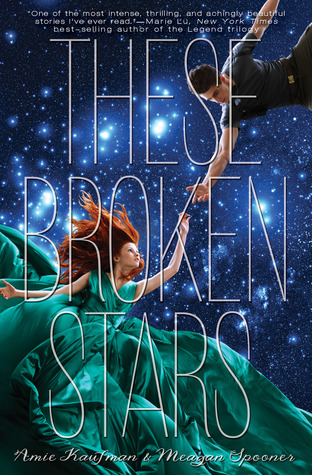 Luxury spaceliner Icarus suddenly plummets from hyperspace into the nearest planet. Lilac LaRoux and Tarver Merendsen survive — alone. Lilac is the daughter of the richest man in the universe. Tarver comes from nothing, a cynical war hero. Both journey across the eerie deserted terrain for help. Everything changes when they uncover the truth.
Luxury spaceliner Icarus suddenly plummets from hyperspace into the nearest planet. Lilac LaRoux and Tarver Merendsen survive — alone. Lilac is the daughter of the richest man in the universe. Tarver comes from nothing, a cynical war hero. Both journey across the eerie deserted terrain for help. Everything changes when they uncover the truth.  Most people are both repelled and intrigued by the images of cold-blooded, conscienceless murderers that increasingly populate our movies, television programs, and newspaper headlines. With their flagrant criminal violation of society’s rules, serial killers like Ted Bundy and John Wayne Gacy are among the most dramatic examples of the psychopath. Individuals with this personality disorder are fully aware of the consequences of their actions and know the difference between right and wrong, yet they are terrifyingly self-centered, remorseless, and unable to care about the feelings of others. Perhaps most frightening, they often seem completely normal to unsuspecting targets–and they do not always ply their trade by killing. Presenting a compelling portrait of these dangerous men and women based on 25 years of distinguished scientific research, Dr. Robert D. Hare vividly describes a world of con artists, hustlers, rapists, and other predators who charm, lie, and manipulate their way through life. Are psychopaths mad, or simply bad? How can they be recognized? And how can we protect ourselves? This book provides solid information and surprising insights for anyone seeking to understand this devastating condition.
Most people are both repelled and intrigued by the images of cold-blooded, conscienceless murderers that increasingly populate our movies, television programs, and newspaper headlines. With their flagrant criminal violation of society’s rules, serial killers like Ted Bundy and John Wayne Gacy are among the most dramatic examples of the psychopath. Individuals with this personality disorder are fully aware of the consequences of their actions and know the difference between right and wrong, yet they are terrifyingly self-centered, remorseless, and unable to care about the feelings of others. Perhaps most frightening, they often seem completely normal to unsuspecting targets–and they do not always ply their trade by killing. Presenting a compelling portrait of these dangerous men and women based on 25 years of distinguished scientific research, Dr. Robert D. Hare vividly describes a world of con artists, hustlers, rapists, and other predators who charm, lie, and manipulate their way through life. Are psychopaths mad, or simply bad? How can they be recognized? And how can we protect ourselves? This book provides solid information and surprising insights for anyone seeking to understand this devastating condition.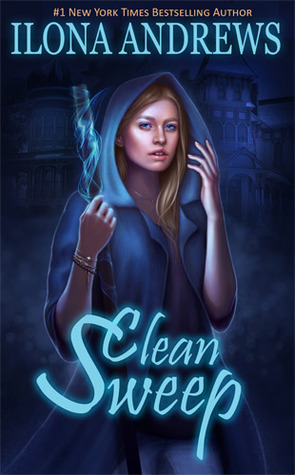 On the outside, Dina Demille is the epitome of normal. She runs a quaint Victorian Bed and Breakfast in a small Texas town, owns a Shih Tzu named Beast, and is a perfect neighbor, whose biggest problem should be what to serve her guests for breakfast. But Dina is…different: Her broom is a deadly weapon; her Inn is magic and thinks for itself. Meant to be a lodging for otherworldly visitors, the only permanent guest is a retired Galactic aristocrat who can’t leave the grounds because she’s responsible for the deaths of millions and someone might shoot her on sight. Under the circumstances, “normal” is a bit of a stretch for Dina. And now, something with wicked claws and deepwater teeth has begun to hunt at night….Feeling responsible for her neighbors, Dina decides to get involved. Before long, she has to juggle dealing with the annoyingly attractive, ex-military, new neighbor, Sean Evans—an alpha-strain werewolf—and the equally arresting cosmic vampire soldier, Arland, while trying to keep her inn and its guests safe. But the enemy she’s facing is unlike anything she’s ever encountered before. It’s smart, vicious, and lethal, and putting herself between this creature and her neighbors might just cost her everything.
On the outside, Dina Demille is the epitome of normal. She runs a quaint Victorian Bed and Breakfast in a small Texas town, owns a Shih Tzu named Beast, and is a perfect neighbor, whose biggest problem should be what to serve her guests for breakfast. But Dina is…different: Her broom is a deadly weapon; her Inn is magic and thinks for itself. Meant to be a lodging for otherworldly visitors, the only permanent guest is a retired Galactic aristocrat who can’t leave the grounds because she’s responsible for the deaths of millions and someone might shoot her on sight. Under the circumstances, “normal” is a bit of a stretch for Dina. And now, something with wicked claws and deepwater teeth has begun to hunt at night….Feeling responsible for her neighbors, Dina decides to get involved. Before long, she has to juggle dealing with the annoyingly attractive, ex-military, new neighbor, Sean Evans—an alpha-strain werewolf—and the equally arresting cosmic vampire soldier, Arland, while trying to keep her inn and its guests safe. But the enemy she’s facing is unlike anything she’s ever encountered before. It’s smart, vicious, and lethal, and putting herself between this creature and her neighbors might just cost her everything.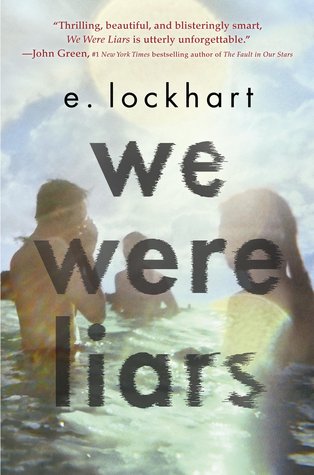 A beautiful and distinguished family.
A beautiful and distinguished family. For generations, we have focused on the individual drivers of success: passion, hard work, talent, and luck. But today, success is increasingly dependent on how we interact with others. It turns out that at work, most people operate as either takers, matchers, or givers. Whereas takers strive to get as much as possible from others and matchers aim to trade evenly, givers are the rare breed of people who contribute to others without expecting anything in return.
For generations, we have focused on the individual drivers of success: passion, hard work, talent, and luck. But today, success is increasingly dependent on how we interact with others. It turns out that at work, most people operate as either takers, matchers, or givers. Whereas takers strive to get as much as possible from others and matchers aim to trade evenly, givers are the rare breed of people who contribute to others without expecting anything in return. The Bartimaeus Sequence is made up of four bestselling novels featuring the grumpy, sarcastic and resourceful fourth-level djinni, Bartimaeus. Since the first book, The Amulet of Samarkand, was published in 2003, the series has sold more than 6 million copies in 36 languages worldwide. The Amulet of Samarkand, The Golem’s Eye and Ptolemy’s Gate are set mainly in an alternative present-day London. They follow Bart’s relationships with his young master, Nathaniel, and with Kitty, a fiery member of the Resistance against the magicians.
The Bartimaeus Sequence is made up of four bestselling novels featuring the grumpy, sarcastic and resourceful fourth-level djinni, Bartimaeus. Since the first book, The Amulet of Samarkand, was published in 2003, the series has sold more than 6 million copies in 36 languages worldwide. The Amulet of Samarkand, The Golem’s Eye and Ptolemy’s Gate are set mainly in an alternative present-day London. They follow Bart’s relationships with his young master, Nathaniel, and with Kitty, a fiery member of the Resistance against the magicians. A fresh and brilliantly told memoir from a cult favorite comic artist, marked by gothic twists, a family funeral home, sexual angst, and great books.
A fresh and brilliantly told memoir from a cult favorite comic artist, marked by gothic twists, a family funeral home, sexual angst, and great books. Four women who worked as codebreakers at Bletchley Park have taken up civilian lives. Susan has collated data about a series of murders. She tries to convince the police she knows where another body is, but they are unable to locate it and dismiss her. She turns to her three friends and they work out where the next victim will be taken, find the body, and then decide they are the only ones who can track down the killer.
Four women who worked as codebreakers at Bletchley Park have taken up civilian lives. Susan has collated data about a series of murders. She tries to convince the police she knows where another body is, but they are unable to locate it and dismiss her. She turns to her three friends and they work out where the next victim will be taken, find the body, and then decide they are the only ones who can track down the killer. Gives you a completely different perspective on processed food! The science that goes into the foods we take for granted is amazing – not only have these foods been carefully crafted to create a “bliss” point, they’ve also been engineered to be highly addictive (finally, an explanation for why I can’t stop eating chips!) Packed with info but never boring, this was hands-down my favorite read of the year. Finally, it contains one of my favorite facts of the year, which I shared to the glee of many many elementary students: there exists a chip-eating robot, whose sole purpose is to determine the absolute perfect crunch for a chip. Awesome!
Gives you a completely different perspective on processed food! The science that goes into the foods we take for granted is amazing – not only have these foods been carefully crafted to create a “bliss” point, they’ve also been engineered to be highly addictive (finally, an explanation for why I can’t stop eating chips!) Packed with info but never boring, this was hands-down my favorite read of the year. Finally, it contains one of my favorite facts of the year, which I shared to the glee of many many elementary students: there exists a chip-eating robot, whose sole purpose is to determine the absolute perfect crunch for a chip. Awesome! A quick read that’s gorgeously written, West of the Moon weaves together folktales and the story of Astri – a Norwegian girl who must rescue her sister, escape a cruel goat-man, and find a way to America, all while pondering questions of magic and right vs. wrong. Beautiful!
A quick read that’s gorgeously written, West of the Moon weaves together folktales and the story of Astri – a Norwegian girl who must rescue her sister, escape a cruel goat-man, and find a way to America, all while pondering questions of magic and right vs. wrong. Beautiful! Finally! The conclusion to the Daughter of Smoke and Bone trilogy! Let’s just say I am very satisfied
Finally! The conclusion to the Daughter of Smoke and Bone trilogy! Let’s just say I am very satisfied  Worth the read due to the format alone – if you like a book filled with hidden codes, microscopic hand-written notes in the margin, and an ambiguous ending, this book’s for you!
Worth the read due to the format alone – if you like a book filled with hidden codes, microscopic hand-written notes in the margin, and an ambiguous ending, this book’s for you!
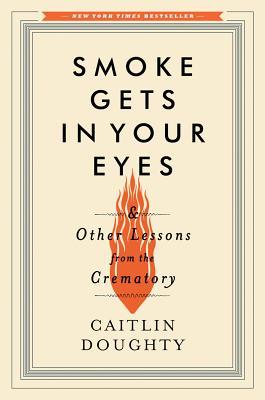 Most people want to avoid thinking about death, but Caitlin Doughty—a twenty-something with a degree in medieval history and a flair for the macabre—took a job at a crematory, turning morbid curiosity into her life’s work. Thrown into a profession of gallows humor and vivid characters (both living and very dead), Caitlin learned to navigate the secretive culture of those who care for the deceased. Honest and heartfelt, self-deprecating and ironic, Caitlin’s engaging style makes this otherwise taboo topic both approachable and engrossing. Now a licensed mortician with an alternative funeral practice, Caitlin argues that our fear of dying warps our culture and society, and she calls for better ways of dealing with death (and our dead).
Most people want to avoid thinking about death, but Caitlin Doughty—a twenty-something with a degree in medieval history and a flair for the macabre—took a job at a crematory, turning morbid curiosity into her life’s work. Thrown into a profession of gallows humor and vivid characters (both living and very dead), Caitlin learned to navigate the secretive culture of those who care for the deceased. Honest and heartfelt, self-deprecating and ironic, Caitlin’s engaging style makes this otherwise taboo topic both approachable and engrossing. Now a licensed mortician with an alternative funeral practice, Caitlin argues that our fear of dying warps our culture and society, and she calls for better ways of dealing with death (and our dead). Following a scalding row with her mother, fifteen-year-old Holly Sykes slams the door on her old life. But Holly is no typical teenage runaway: a sensitive child once contacted by voices she knew only as “the radio people,” Holly is a lightning rod for psychic phenomena. Now, as she wanders deeper into the English countryside, visions and coincidences reorder her reality until they assume the aura of a nightmare brought to life… A Cambridge scholarship boy grooming himself for wealth and influence, a conflicted father who feels alive only while reporting from occupied Iraq, a middle-aged writer mourning his exile from the bestseller list—all have a part to play in this surreal, invisible war on the margins of our world. From the medieval Swiss Alps to the nineteenth-century Australian bush, from a hotel in Shanghai to a Manhattan townhouse in the near future, their stories come together in moments of everyday grace and extraordinary wonder.
Following a scalding row with her mother, fifteen-year-old Holly Sykes slams the door on her old life. But Holly is no typical teenage runaway: a sensitive child once contacted by voices she knew only as “the radio people,” Holly is a lightning rod for psychic phenomena. Now, as she wanders deeper into the English countryside, visions and coincidences reorder her reality until they assume the aura of a nightmare brought to life… A Cambridge scholarship boy grooming himself for wealth and influence, a conflicted father who feels alive only while reporting from occupied Iraq, a middle-aged writer mourning his exile from the bestseller list—all have a part to play in this surreal, invisible war on the margins of our world. From the medieval Swiss Alps to the nineteenth-century Australian bush, from a hotel in Shanghai to a Manhattan townhouse in the near future, their stories come together in moments of everyday grace and extraordinary wonder. Each day we face a barrage of images and messages from society and the media telling us who, what, and how we should be. We are led to believe that if we could only look perfect and lead perfect lives, we’d no longer feel inadequate. So most of us perform, please, and perfect, all the while thinking, What if I can’t keep all of these balls in the air? Why isn’t everyone else working harder and living up to my expectations? What will people think if I fail or give up? When can I stop proving myself? In The Gifts of Imperfection, Brené Brown, PhD, a leading expert on shame, authenticity and belonging, shares what she’s learned from a decade of research on the power of Wholehearted Living–a way of engaging with the world from a place of worthiness.
Each day we face a barrage of images and messages from society and the media telling us who, what, and how we should be. We are led to believe that if we could only look perfect and lead perfect lives, we’d no longer feel inadequate. So most of us perform, please, and perfect, all the while thinking, What if I can’t keep all of these balls in the air? Why isn’t everyone else working harder and living up to my expectations? What will people think if I fail or give up? When can I stop proving myself? In The Gifts of Imperfection, Brené Brown, PhD, a leading expert on shame, authenticity and belonging, shares what she’s learned from a decade of research on the power of Wholehearted Living–a way of engaging with the world from a place of worthiness. Every time Allie Brosh posts something new on her hugely popular blog Hyperbole and a Half the internet rejoices. This full-color, beautifully illustrated edition features more than fifty percent new content, with ten never-before-seen essays and one wholly revised and expanded piece as well as classics from the website like, “The God of Cake,” “Dogs Don’t Understand Basic Concepts Like Moving,” and her astonishing, “Adventures in Depression,” and “Depression Part Two,” which have been hailed as some of the most insightful meditations on the disease ever written. Brosh’s debut marks the launch of a major new American humorist who will surely make even the biggest scrooge or snob laugh. We dare you not to.
Every time Allie Brosh posts something new on her hugely popular blog Hyperbole and a Half the internet rejoices. This full-color, beautifully illustrated edition features more than fifty percent new content, with ten never-before-seen essays and one wholly revised and expanded piece as well as classics from the website like, “The God of Cake,” “Dogs Don’t Understand Basic Concepts Like Moving,” and her astonishing, “Adventures in Depression,” and “Depression Part Two,” which have been hailed as some of the most insightful meditations on the disease ever written. Brosh’s debut marks the launch of a major new American humorist who will surely make even the biggest scrooge or snob laugh. We dare you not to.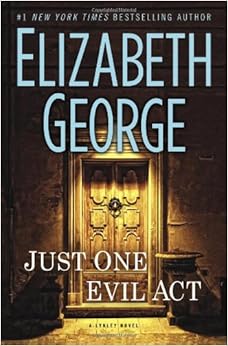 Inspector Lynley plays the back up role as Detective Sargent Barbara Havers gets caught up in the kidnapping of her young friend, Hadiyyah, and the complications of that act. This volume moves back and forth between England and Italy. The small Italian town is a great setting. I did find the use of Italian phrases annoying, but they did lend depth to the setting and the problems Barbara faced not knowing the language. I loved the Italian, Inspector Lo Bianco. He should get his own series.
Inspector Lynley plays the back up role as Detective Sargent Barbara Havers gets caught up in the kidnapping of her young friend, Hadiyyah, and the complications of that act. This volume moves back and forth between England and Italy. The small Italian town is a great setting. I did find the use of Italian phrases annoying, but they did lend depth to the setting and the problems Barbara faced not knowing the language. I loved the Italian, Inspector Lo Bianco. He should get his own series. This book is dark. We are in London, post Jack the Ripper, and everyone is angry that Scotland Yard couldn’t catch him. Their reputation is on the line again, especially when policemen start getting killed. This is a gritty book, not for the faint of heart. It is a tense page turner with particularly grisly murders.
This book is dark. We are in London, post Jack the Ripper, and everyone is angry that Scotland Yard couldn’t catch him. Their reputation is on the line again, especially when policemen start getting killed. This is a gritty book, not for the faint of heart. It is a tense page turner with particularly grisly murders. This delightful sixth book in the Flavia DeLuce series is, I think, the best one so far. Flavia is starting to grow up. I don’t know how Mr. Bradley understands the slow process of maturation in a young girl but it is marvelous to see the subtle ways Flavia is changing in her words and actions. With this book, this series takes a twist I never saw coming, but it promises even more adventures to come.
This delightful sixth book in the Flavia DeLuce series is, I think, the best one so far. Flavia is starting to grow up. I don’t know how Mr. Bradley understands the slow process of maturation in a young girl but it is marvelous to see the subtle ways Flavia is changing in her words and actions. With this book, this series takes a twist I never saw coming, but it promises even more adventures to come. This book takes place in a very small village in the Shetland Islands. It is very suspenseful, and somewhat dark, showing the negative side of insular living in a small, isolated village. Outsider Jimmy Perez, a detective that grew up in an even smaller island community, heads up the investigation of a dead teenager. Once before in Shetland, a young girl disappeared, never to be found. There was a prime suspect but neither a body nor the proof was ever discovered. Is there a connection? The locals certainly think so, but Detective Perez isn’t so sure. This one kept me guessing right up to the moment of the arrest.
This book takes place in a very small village in the Shetland Islands. It is very suspenseful, and somewhat dark, showing the negative side of insular living in a small, isolated village. Outsider Jimmy Perez, a detective that grew up in an even smaller island community, heads up the investigation of a dead teenager. Once before in Shetland, a young girl disappeared, never to be found. There was a prime suspect but neither a body nor the proof was ever discovered. Is there a connection? The locals certainly think so, but Detective Perez isn’t so sure. This one kept me guessing right up to the moment of the arrest. Marcus Luttrell and his team set out on a mission to capture or kill notorious Taliban leader Ahmad Shah, in late June 2005. Marcus and his team are left to fight for their lives in one of the most valiant efforts of modern warfare.
Marcus Luttrell and his team set out on a mission to capture or kill notorious Taliban leader Ahmad Shah, in late June 2005. Marcus and his team are left to fight for their lives in one of the most valiant efforts of modern warfare. I am not the sort of person about whom stories are told. And so begins Elise Dalriss’s story. When she hears her great-granddaughter recount a minstrel’s tale about a beautiful princess asleep in a tower, it pushes open a door to the past, a door Elise has long kept locked. For Elise was the companion to the real princess who slumbered–and she is the only one left who knows what actually happened so many years ago. Her story unveils a labyrinth where secrets connect to an inconceivable evil. As only Elise understands all too well, the truth is no fairy tale.
I am not the sort of person about whom stories are told. And so begins Elise Dalriss’s story. When she hears her great-granddaughter recount a minstrel’s tale about a beautiful princess asleep in a tower, it pushes open a door to the past, a door Elise has long kept locked. For Elise was the companion to the real princess who slumbered–and she is the only one left who knows what actually happened so many years ago. Her story unveils a labyrinth where secrets connect to an inconceivable evil. As only Elise understands all too well, the truth is no fairy tale. For Jess Hall, growing up in Marshall means trouble when your mother catches you spying on grown-ups. Jess is protective of his older brother, a mute whom everyone calls Stump. Though their mother has warned them not to snoop, Stump can’t help sneaking a look at something he’s not supposed to–an act that will have catastrophic repercussions, shattering both his world and Jess’s.
For Jess Hall, growing up in Marshall means trouble when your mother catches you spying on grown-ups. Jess is protective of his older brother, a mute whom everyone calls Stump. Though their mother has warned them not to snoop, Stump can’t help sneaking a look at something he’s not supposed to–an act that will have catastrophic repercussions, shattering both his world and Jess’s.